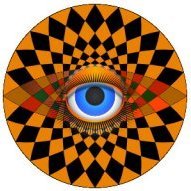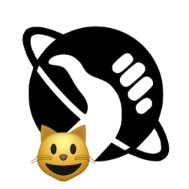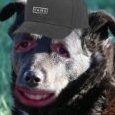-
Posts
1,472 -
Joined
-
Last visited
Reputation Activity
-
 h_d got a reaction from APageInABook in Exporting Text from Affinity
h_d got a reaction from APageInABook in Exporting Text from Affinity
Ah yes, hadn't thought. If you're on macOS you can export as PDF and then use Automator, without sending your text to be read by an online converter:
-
 h_d reacted to loukash in Poor Quality Export
h_d reacted to loukash in Poor Quality Export
Important "tricks" while actually designing your logo if you need pixel-precise and ultrasharp export:
set your document units to pixel enable Grid, I'd use something like spacing: 8 px, divisions: 8 enable View > View Mode > Pixel enable Snapping, with Force Pixel Alignment, Move By Whole Pixels, and Snap To Grid if you're working with strokes and text, disable Preferences > User Interface > Show Lines/Text in Points use only integer zoom factors 100% 200% 300% 400% etc. when possible, to avoid display antialiasing avoid exporting to JPEG, export to PNG instead
-
 h_d got a reaction from APageInABook in Exporting Text from Affinity
h_d got a reaction from APageInABook in Exporting Text from Affinity
Cut (or copy) and paste is the only way as far as I'm aware. 😒
-
 h_d got a reaction from firstdefence in Question regarding the color replacement brush
h_d got a reaction from firstdefence in Question regarding the color replacement brush
You could select the area you want to modify, apply a Channel Mixer adjustment, and then adjust the colour values and blend mode to taste
Here I dialled down the red value in the red channel from 100% to 41%, and set the blend mode to Multiply.
Before:
After:
The orange bill is masked out and not affected by the adjustment. Play with the values in the other channels to modify the colouring.
(BTW I'm pretty sure that's a swan, not a goose 😆)
-
 h_d reacted to zBernie in Question regarding the color replacement brush
h_d reacted to zBernie in Question regarding the color replacement brush
Thanks you that works very well! And also maintains the highlights and shadows. And I meant to says swan, not goose! :)
-
 h_d got a reaction from DNA0101 in Locked leading on Publisher
h_d got a reaction from DNA0101 in Locked leading on Publisher
Also check your Baseline Grid settings for your document. These are in View - Baseline Grid Manager - .
and also for the individual text frame in View - Studio - Text Frame:
If the original text frame was not set to lock to Ignore Baseline Grid, and your document or text frame has a baseline grid (showing or not) then changing the leading may not necessarily change the line spacing. This is 9pt leading with a 48pt Baseline Grid:
Cheers,
H
-
 h_d got a reaction from jmwellborn in No user manual?
h_d got a reaction from jmwellborn in No user manual?
Indeed: https://resources.serif.com/photo/start_guide/Affinity+Photo+Start+Guide.pdf
https://affinity.serif.com/en-gb/tutorials/photo/desktop/video/365012457/
https://affinity.serif.com/en-gb/tutorials/photo/desktop/video/310549897/
-
 h_d reacted to DBerlin81 in How to add links?
h_d reacted to DBerlin81 in How to add links?
Oh, wow. Classic fail on my part. 🤣 Just laughed thuroughly at myself. See, those options are scrollable on my computer and didn't notice the scroll bar. THANKS. Hilarious ...
-
 h_d reacted to jmwellborn in No user manual?
h_d reacted to jmwellborn in No user manual?
@towelhead and @DaveS 71 I suggest that you check out some very useful official information on the basics of Photo, Designer, and Publisher that is posted here and readily available on the forums. It is a little hard to find, but there nevertheless. Go up to the top of the Forum page, click on the word “Affinity” then click on “Spotlight.” You will open a vast resource of official Affinity articles. Scroll down to the section titled “Learning” and click on that. More very useful “how to” articles. Then scroll to “Top Learning Articles for Affinity Newcomers” and you will find — among other things — three specific articles: “Jump Into Affinity Publisher,” “Jump Into Affinity Designer,” and “Jump into Affinity Photo.” All are very helpful and very easy to understand. NOT a “stinking pile” of anything. Hopefully Spotlight will help you on your way.
-
 h_d reacted to loukash in How to make stroke a darker version of the fill colour? (Affinity Designer)
h_d reacted to loukash in How to make stroke a darker version of the fill colour? (Affinity Designer)
Just to add:
Be aware that on vector export, any such effects will be possibly rasterized. And if not aligned precizely to the page/artboard pixel grid, you may see some unwanted and ugly antialiasing artifacts on object edges.
You may want to choose "Rasterize: Nothing" to keep the vectors and – to some extent – the effects intact, but that may again break other features of your design.
-
 h_d got a reaction from loukash in How to make stroke a darker version of the fill colour? (Affinity Designer)
h_d got a reaction from loukash in How to make stroke a darker version of the fill colour? (Affinity Designer)
Or possibly...
I created two coloured shapes for the upper and lower areas of the body. I then grouped them and duplicated the group. I then used Boolean Add to combine the elements of the second (upper) group, and then ungrouped the remaining single object to give me the Border layer. I set the fill on this object to none and its stroke colour to black, aligned inside.
I then set the blend mode of the Border layer to Colour Burn and its opacity to 40%:
The body colours can be edited to taste:
And you can add extra bits without any modification of border layer:
Original .afdesign doc attached.
Cheers,
H
animal body.afdesign
-
 h_d got a reaction from markw in How to make stroke a darker version of the fill colour? (Affinity Designer)
h_d got a reaction from markw in How to make stroke a darker version of the fill colour? (Affinity Designer)
Or possibly...
I created two coloured shapes for the upper and lower areas of the body. I then grouped them and duplicated the group. I then used Boolean Add to combine the elements of the second (upper) group, and then ungrouped the remaining single object to give me the Border layer. I set the fill on this object to none and its stroke colour to black, aligned inside.
I then set the blend mode of the Border layer to Colour Burn and its opacity to 40%:
The body colours can be edited to taste:
And you can add extra bits without any modification of border layer:
Original .afdesign doc attached.
Cheers,
H
animal body.afdesign
-
 h_d got a reaction from Alfred in How to make stroke a darker version of the fill colour? (Affinity Designer)
h_d got a reaction from Alfred in How to make stroke a darker version of the fill colour? (Affinity Designer)
Or possibly...
I created two coloured shapes for the upper and lower areas of the body. I then grouped them and duplicated the group. I then used Boolean Add to combine the elements of the second (upper) group, and then ungrouped the remaining single object to give me the Border layer. I set the fill on this object to none and its stroke colour to black, aligned inside.
I then set the blend mode of the Border layer to Colour Burn and its opacity to 40%:
The body colours can be edited to taste:
And you can add extra bits without any modification of border layer:
Original .afdesign doc attached.
Cheers,
H
animal body.afdesign
-
 h_d reacted to dmstraker in Vibrance Saturation slider algorithm?
h_d reacted to dmstraker in Vibrance Saturation slider algorithm?
Apologies for the confusion. If it will help, more detail is below that hopefully answers your questions and explains my motivations.
1. Monochrome conversion
In a colour image, Red, Green and Blue have different values in each pixel. When Red, Green and Blue values in a pixel are equal, the result is white, grey or black (in other words, monochrome). The puzzle in converting to monochrome is how to shift the Red, Green and Blue in each pixel so they are equal. Examples of this include:
Take the average. So if R=100%, G=0 and B=0 (in other words bright, saturated red), the monochrome pixel value is R=33%, G=33%, B=33% Go half-way between the maximum and the minimum. So if R=100%, G=0% and B=0%, the maximum is 100% and the minimum is 0% the monochrome pixel value is R=50%, G=50%, B=50% (which will make the pixel a mid-grey, which is brighter than the first method). Use the gap between the maximum and the minimum. So if R=100%, G=0% and B=0%, the maximum is 100% and the minimum is 0% the monochrome pixel value is R=100%, G=100%, B=100% (which will make the pixel even brighter - in fact it will be white). So the question is 'What method will you use to convert the colour image into monochrome (ie black and white)?'
A further problem is that when we look at different colours, we perceive them to be of different brightness. Just taking the primary and secondary colours (red, yellow, green, cyan, blue ad magenta), Yellow is seen as bright, while Blue is seen as dark, with the other colours in between. If you use any of the calculations above to create monochrome, a yellow and a blue pixel will both have the same brightness. This can make an image look poor (a good example is a bunch of different coloured flowers which all come out in similar shades of grey).
So someone found that when converting to monochrome, it worked well to take different amounts of Red, Green and Blue. Because of the eye's sensitivity to different colours, within each pixel in the coloured image, you take about 30% of the Red, 59% of the Green and 11% of the Blue and then create the monochrome pixel by setting Red, Green and Blue all to the same value from this calculation. As a formula, this is R*0.30+G*0.59+B*0.11. The result is a monochrome image that looks more realistic.
So if R=100%, G=0% and B=0%, the 30/59/11% calculation is 0.3*100%+0.59*0%+0.11*0% = 30%. So pure red appears as a darkish grey. if R=0%, G=100% and B=0%, the 30/59/11% calculation is 0.3*100%+0.59*100%+0.11*0% = 59%. So pure green appears as a lighter grey. In this way, different colours, even when they have the same pixel value are converted to appear as different shades of grey.
2. The Vibrance question
A way in Affinity Photo to create a monochrome image is to turn down the saturation. A question is whether this takes account of the 30/59/11% tweak above.
When you turn down the Saturation in the HSL adjustment, it uses a formula that means a similarly saturated Yellow and Blue will appear as the same shade of grey. In some situations this is just fine, but if you want 30/59/11% conversion, so the human eye makes more natural sense of the colours, you need a different method.
The Vibrance adjustment also has a Saturation control, but turning this down has a different effect to the Saturation control in HSL. I had thought the result was just from using the 30/59/11% calculation, but it seems to be slightly different.
A way to get a perfect 30/59/11% calculation is to use Levels and simply change the RGB drop-down control to Grey.
3. My motivation
I am both a curious old techie and the author of the InAffinity YouTube channel where I explore and explain Affinity Photo. In this, I talk about such things as the 30/59/11% thing and the difference between HSL and Vibrance Saturation controls. Hence my original question. This helps me learn as well as giving the buzz of helping others. And hopefully also helping Serif, a great British company, to sell more product. With nearly 10,000 subscribers and lots of nice comments, I'm guessing I'm nudging the needle a little.
Slightly perplexingly, Patrick seems to think I am trying to get hold of company secrets and distracting the developers from their important work. Some people would be insulted by this rebuke, but I am not. I was both a developer and then a QA engineer and, if I'm honest, was a pretty prickly geek who sometimes got irritated by perceived challenges. But then I studied psychology, looked in the mirror and hope I'm a bit cooler now. In particular I don't assume I know the thoughts and intent of others. In fact I've found that thinking kindly about them is better for me as well as for my relationships.
So all's good.
-
 h_d got a reaction from Pšenda in Poster is cropped
h_d got a reaction from Pšenda in Poster is cropped
Do you mean cropped like this:
If so it's because of this:
The substitute fonts are much wider than the originals - are Agency and Baskerville Old Face installed on the other machine?
ADD: actually "Rootles" is quite a good name for a movie...
-
 h_d got a reaction from Old Bruce in Affinity Photo: Magic Wand - Adding not working
h_d got a reaction from Old Bruce in Affinity Photo: Magic Wand - Adding not working
Ah yes apologies.
When I shift-clicked I was in Append mode (which the OP doesn't want). In "New" mode, as @Old Bruce rightly says, only ctrl-click adds to the selection on macOS. I would expect a secondary click (two-finger click on the trackpad, presumably the equivalent of right-click on Windows), to do the same. But it doesn't. Might need a bug report from a Windows user.
-
 h_d reacted to thomaso in Any essential Indesign features that Affinity Publisher lacks?
h_d reacted to thomaso in Any essential Indesign features that Affinity Publisher lacks?
The fact that APub is mainly (not only) an app which increases the workflow efficiency of the available design, editing and layout features of AD and APh makes me assume that a feature of "Scriptability" could cause a series of other missed features become available. From this perspective a Script interface is a true essential feature, also for those who don't do coding.
It wouldn't mean that Serif / Affinity couldn't implement features which became real at first as such scripts – rather the use of such scripted features would cause user feedback for preventing bugs and improving a final, native implementation.
-
 h_d got a reaction from Callum in Does anyone understand this...
h_d got a reaction from Callum in Does anyone understand this...
It's in all the four Formula Guide Solid and Color Bridge groups of Pantone swatches in the panel. 287 U is solid (or spot) uncoated, 287 C is is solid (or spot) coated. As I understand it, the PU and PC versions are approximations of how the solids would look if printed with a CMYK mix - Process Uncoated and Process Coated.
-
 h_d got a reaction from Pšenda in Black workshop window
h_d got a reaction from Pšenda in Black workshop window
Unfortunately not on macOS in 'unseparated mode'. The only indicator that a window is open is the document title in the menu bar, which is not connected with the image:
.
This is compounded by the fact that on a Mac trackpad, you can pinch zoom to below 1% - here the zoom goes to 0.2% (like Spinal Tap but in reverse???) despite the Navigator reporting 1%:
. In a situation like that when using Dark UI it's quite easy to lose track of where the image is on screen.
-
 h_d reacted to loukash in Link artboards?
h_d reacted to loukash in Link artboards?
Other options:
name those objects in the Layers panel, giving them all the same name, then Select > Select Same > Name tag those objects in the Layers panel, giving them all the same tag color, then Select > Select Same > Tag Color -
 h_d got a reaction from Totte in Link artboards?
h_d got a reaction from Totte in Link artboards?
Global colours as suggested by @walt.farrell are the way to go.
In the Swatches panel, Add a new palette. This can be document, application or system-wide and by default will be called Unnamed (grrrr....)
Rename the palette if you want (mine is called Logos), then Add Global Colour:
Again, you can rename the colour if you want.
The white "dog ear" at the bottom left of the swatch indicates that it's global.
Apply that colour to your icons:
Right-click on the global colour in the swatches panel and Edit Fill:
All instances of the global colour will be updated.
(PS if you've got a different question, it's a good idea to start a new thread. Makes it easier to find )
-
 h_d reacted to Gort in Masking Effect...
h_d reacted to Gort in Masking Effect...
Excellent!!
This made perfect sense and worked a treat.
Many thanks h_d for your time and your explanation...
-
 h_d got a reaction from Totte in Link artboards?
h_d got a reaction from Totte in Link artboards?
'Unofficial' video:
Screen Recording 2021-04-08 at 20.41.00.mov Basically display the Symbols panel, select your rectangle, click Create, drag the symbol to the other artboards, select one of the nested rectangles in the Layers panel, and change its colour (or shape, or position, or anything...)
-
 h_d got a reaction from Gort in Masking Effect...
h_d got a reaction from Gort in Masking Effect...
I'm on versions 1.9.2 of Photo and Designer, running macOS (but Windows should be more or less the same). I'll try to be a bit clearer...
Starting in Designer, place your image. Now from the File menu choose Edit in Photo:
This switches you and the Designer document into Photo (it sounds as though you have it?)
Draw a white rectangle over the image and set its blend mode to Colour Burn (I actually changed mine to Overlay later, see. below):
With the rectangle selected, from the Layer menu, choose New Live Filter Layer - Lighting:
This will give you a new Live Lighting filter, nested under the rectangle:
Close the filter settings dialog and from the File menu in Photo, choose Edit in Designer to switch you and the document back to AD, then double-click on the (still Live) Lighting filter in the Layers panel. (This is where I changed the blend mode on the rectangle from Colour Burn to Overlay):
Adjust settings, colours etc as required, then close the Live Lighting settings box.
Open the Assets panel, select the rectangle, pull down the so-called "Hamburger" menu in Assets and choose Add from Selection...
This will give you a "lighting controller" in your Designer Assets which can be dragged over any image (and adjusted if need be):
Hope this makes sense!
-
 h_d got a reaction from jmwellborn in From InDesign .idml to Affinity Publisher -- can't select text
h_d got a reaction from jmwellborn in From InDesign .idml to Affinity Publisher -- can't select text
I'm not from Serif, but the x's mean that the text frame is on the master page, not on the current document page, and although it can be selected, it cannot be edited or modified unless you either (a) work on the relevant master page or (b) you choose Master Page - Edit Detached (or Edit Linked) from the Layers menu.
This is a document page with a master page text frame selected, displaying the crosses (typically used for standing text like folios, repeated headers etc), nested inside Master A):
This is a document page with a document page text frame selected, displaying editable control handles (typically used to contain flowing document content), not nested in the master page:
Someone from Serif has explained it further in the help files, Detaching and Linking Master Pages.
Cheers,
H




_1.thumb.jpg.e0c4ab8f2dfc6a3c241f56bb410c725b.jpg)





